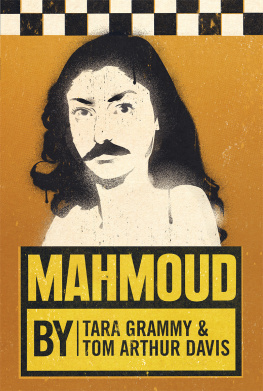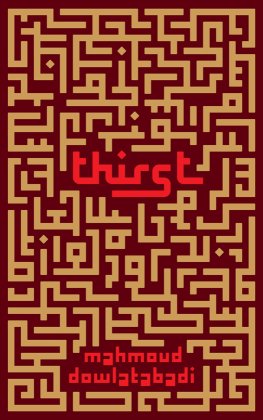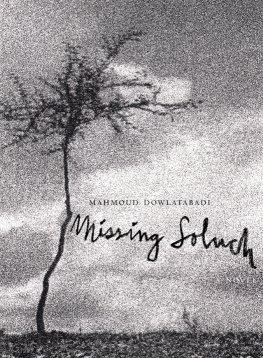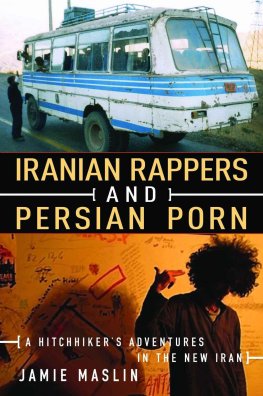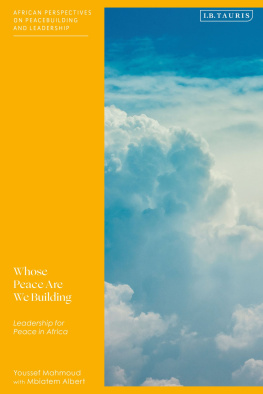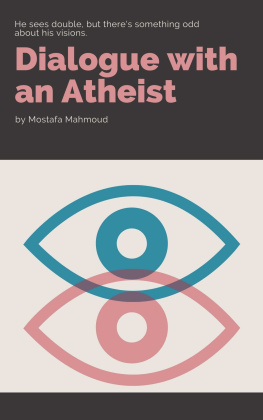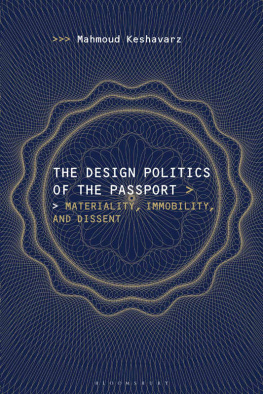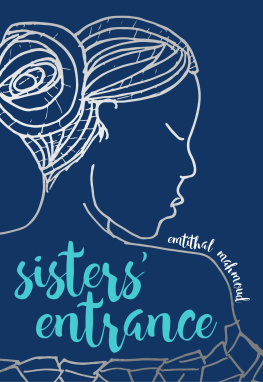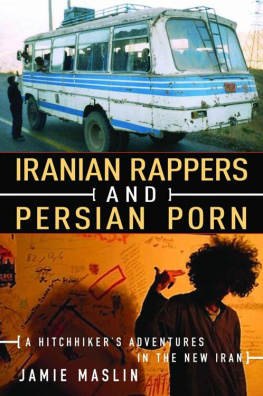
Mahmoud
By
Tara Grammy &
Tom Arthur Davis
Playwrights Canada Press
Toronto
Contents
Mahmoud Copyright 2015 by Tara Grammy and Tom Arthur Davis
No part of this book may be reproduced, downloaded, or used in any form or by any means without the prior written permission of the publisher, except for excerpts in a review or by a licence from Access Copyright, www.accesscopyright.ca.
For professional or amateur production rights, please contact the publisher.
Cover art and design by Patrick Gray
202-269 Richmond St. W.
Toronto, ON
M5V 1X1
416.703.0013
info@playwrightscanada.com
playwrightscanada.com
Library and Archives Canada Cataloguing in Publication
Grammy, Tara, 1988-, author
Mahmoud [electronic resource] / Tara Grammy and Tom Arthur Davis.
A play.
Issued in print and electronic formats.
ISBN 978-1-77091-324-0 (pbk.).--ISBN 978-1-77091-325-7 (pdf).-
ISBN 978-1-77091-326-4 (epub)
I. Davis, Tom Arthur, 1988-, author II. Title.
PS8613.R354M34 2015 C812.6 C2014-908385-8
C2014-908386-6
We acknowledge the financial support of the Canada Council for the Arts, the Ontario Arts Council (OAC), the Ontario Media Development Corporation, and the Government of Canada through the Canada Book Fund for our publishing activities.
For our mothers, Arta and Marlane, who taught us to be dreamers.
For our fathers, Bob and Khosrow, who taught us to keep our feet on the ground.
The first spark was inspired by Paul Klees painting Dance of the Red Skirts. Leah Cherniak had shown us this piece in our fourth-year drama performance class at the University of Toronto as a place from which to draw images for our self-written solo projects. This painting of a city in ruins with disjointed figures strewn around it, all wearing red, took me back to Tehran, but not the Tehran that I knew. My Tehran was a city full of love, which had grown exponentially before eyes that were blind to anything but the fun and excitement of being with my family when I visited every summer. Dance of the Red Skirts was the Tehran my mothers generation knew. My mother saw her home divided by revolution and desecrated by war. To her, the vibrant Tehran she knew was polluted, defeated, and tired. For a split second, and for the first time, I saw the city through her eyes, and something in me shifted.
That night, the sweet man who drove me home was an Iranian Canadian engineer-cum-cab driver whose name I regretfully never learned. This mans kind demeanour and familiar accent followed me to class the next day as I walked around the Helen Gardiner Phelan Playhouse with a duct-tape moustache and Toms coat for a few hours, and thus the character Mahmoud was born. Our conversation about the generational divide between Iranian immigrants became the basis for my ten-minute self-written solo project. The climax of Mahmoud, the final conversation between Mahmoud and Tara, is only a slightly edited version of that original piece.
The following summer of 2009, after I presented my solo project to my professors and peers, the Green Movement started in Iran. I opted not to visit my family in Tehran that summer and watched the events that unfolded in my country from afar. The helplessness and anxiety that flooded the lives of Iranians all over the world was tangible. As an honorary Iranian, Tom felt it too, and we decided to develop Mahmoud as a full-length play to deal with these emotions.
With the developmental support of Pandemic Theatre, the dramaturgical support of Soheil Parsa, and the financial support of Torontos Iranian community, we set out to create the full-length version of Mahmoud. Through hours upon hours of improvisation, laughter, and tears, we finally came up with something. It was during this period that we introduced the characters of Tara and Emanuelos. It became apparent that this play would be intensely personal, so it felt right to include details of my childhood growing up in Toronto. I knew there were many little girls like me out there, who felt lost in their multinational identities, and who would eventually grow up and deal with the same issues I faced. Drawing from real and exaggerated events in my life, Taras story wrote itself.
We also felt the need to use the play to highlight the homophobia in Iranian immigrant communities, and the desperate need to bridge the gap between their traditional beliefs and modern realities. Much to the dismay of my friends and family, I had been playing the character of a very flamboyant Spanish man named Emanuelos de Mille Boneros Testosteronos since I was fourteen. He was very superficial and mostly gave unsolicited fashion advice to everyone around him. Inspired by my mother, who loved Emanuelos and had told us many stories about her gay Iranian friends, we came up with the storyline of Emanuelos and Behnam.
The play debuted at the Tarragon Theatre Extra Space in February 2011, two years after I performed the original ten-minute version at U of T. A series of positive reviews, and the endorsement of Woody Harrelsonwho became a fan of the show after seeing it completely by chanceled to sold-out houses. Once we realized the effect the play was having on audiences, we decided to develop it even further.
The final version of Mahmoud was developed in the months before July 2012, when we presented it at the Toronto Fringe Festival to sold-out crowds, eventually participating in the Best of Fringe series. In August 2012, we took the play to New York City for the New York International Fringe Festival. Much to our surprise, Mahmoud continued to reach audiences in the Big Apple, winning Overall Excellence in Solo Performance and taking part in the Encore Series, which awarded us another week of shows off-Broadway. Mahmouds New York success found its way to Los Angeles in January of 2013, and, as they say, the rest is history.
I am humbled by the success that Mahmoud has met wherever it has been produced. There is no experience quite like performing Mahmoud. Nothing gives me the same kind of release and satisfaction. The characters have become my friends, and I am grateful to have had the chance to embody them for so long. I hope they speak to the outsider inside you, and I hope that their stories cause something, however small, to shift in your point of view.
Tara Grammy
Los Angeles, December 2014
After seeing Tara perform the first incarnation of Mahmoud, that short ten-minute class performance, I knew that I wanted to see more. She was too captivating as this quirky Persian cab driver to leave it undeveloped.
This was in May of 2009, exactly one month before the contested elections in Iran, which subsequently reinstated conservative president Mahmoud Ahmadinejad. In protest of seemingly fraudulent electoral practices, many Iranians took to the streets in what was dubbed the Green Movement (green being the campaign colour of Mir-Hossein Mousavi, whom many declared to be the true victor). With a very young population (60% of Irans then population of seventy-three million were under the age of thirty), there were calls for another revolution; a call for true democracy. But the protests were not met peacefully, and many young men and women were imprisoned, beaten, and killed at the hands of pro-government militia. The death of Neda Agha-Soltan, in particular, drew international attention after she was shot by a sniper during a protest, to which she was an innocent bystander. The whole tragic event was caught on camera, the video went viral, and Neda (whose name aptly means voice in Persian) became the face of the opposition.
Next page
